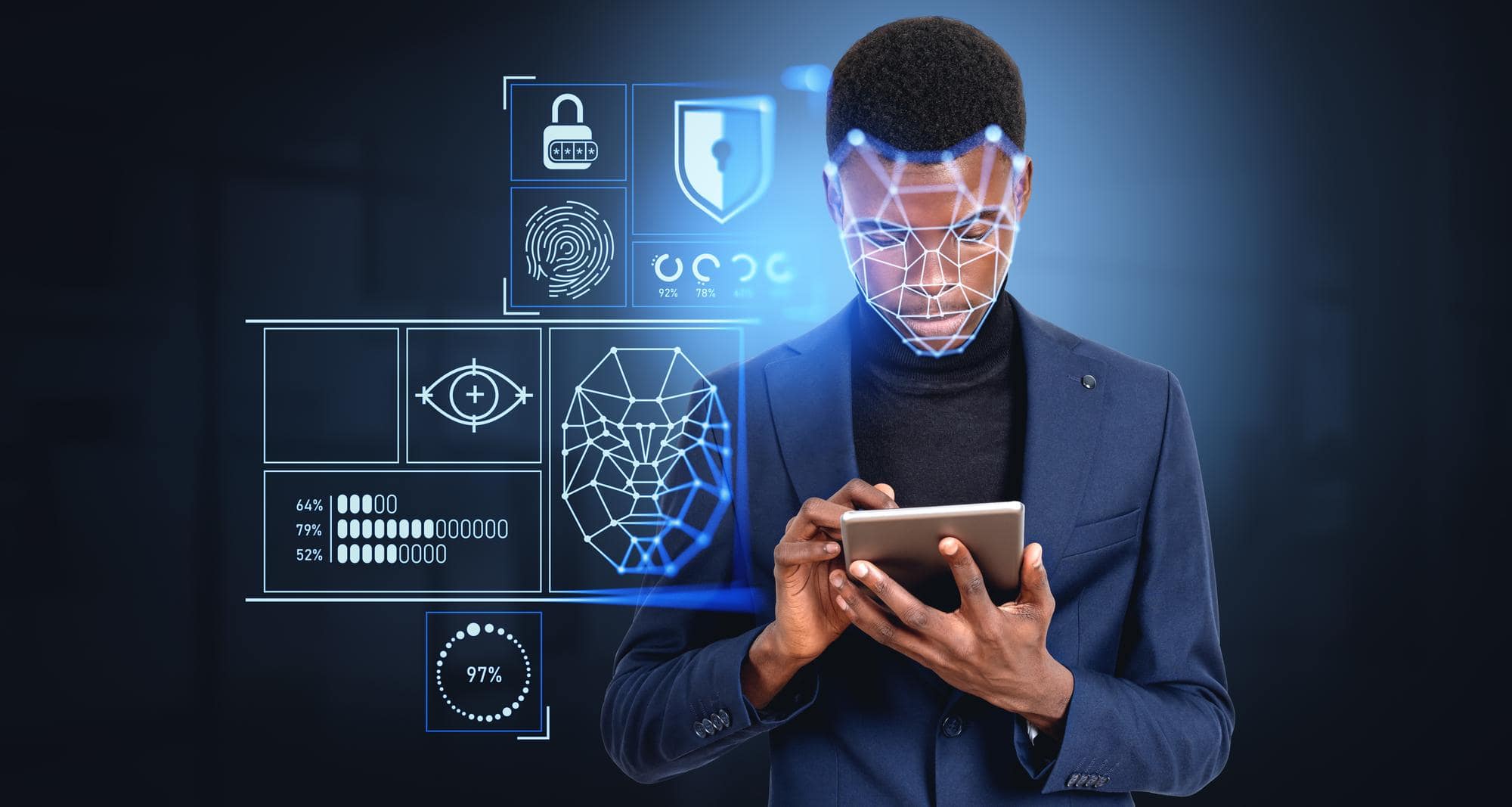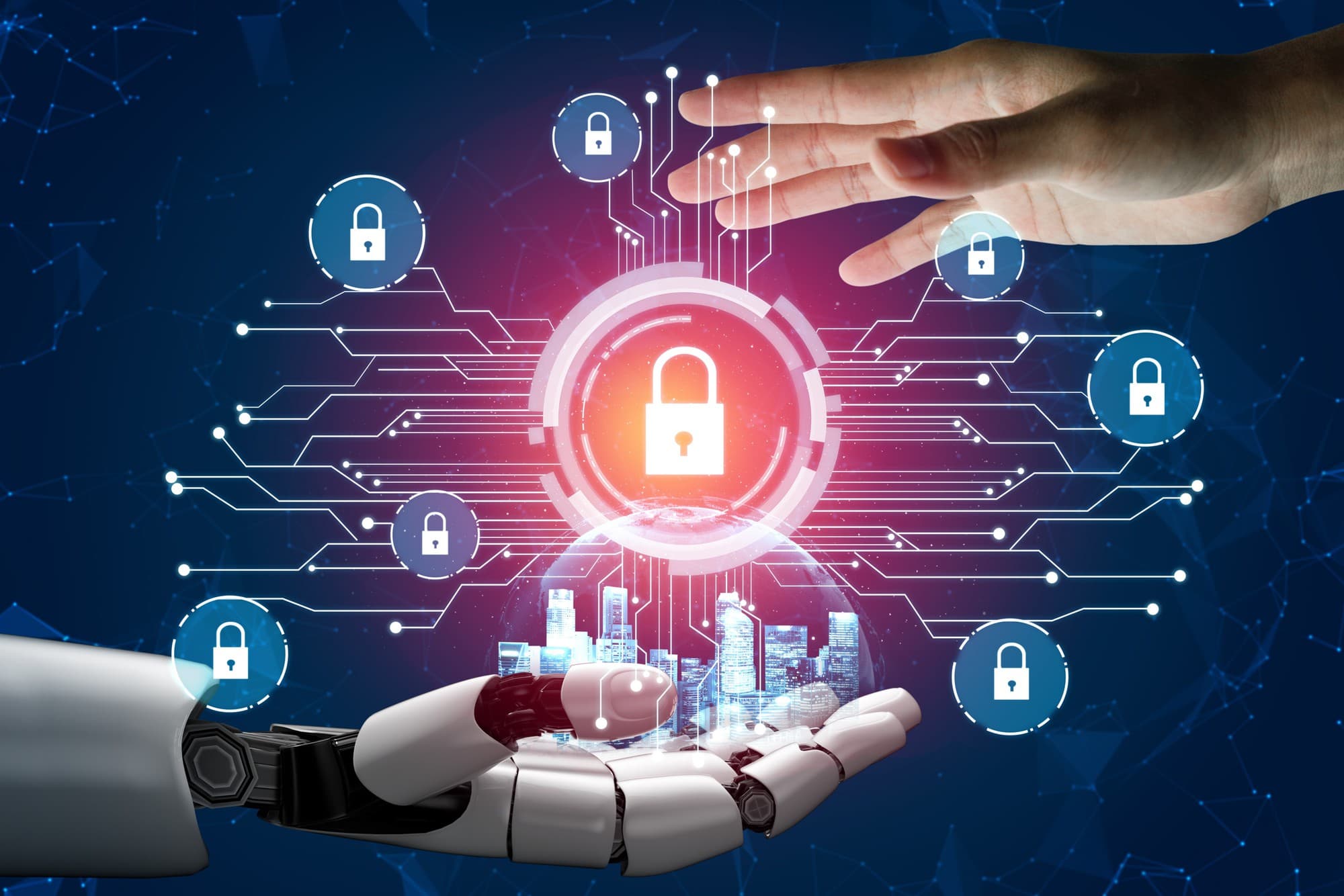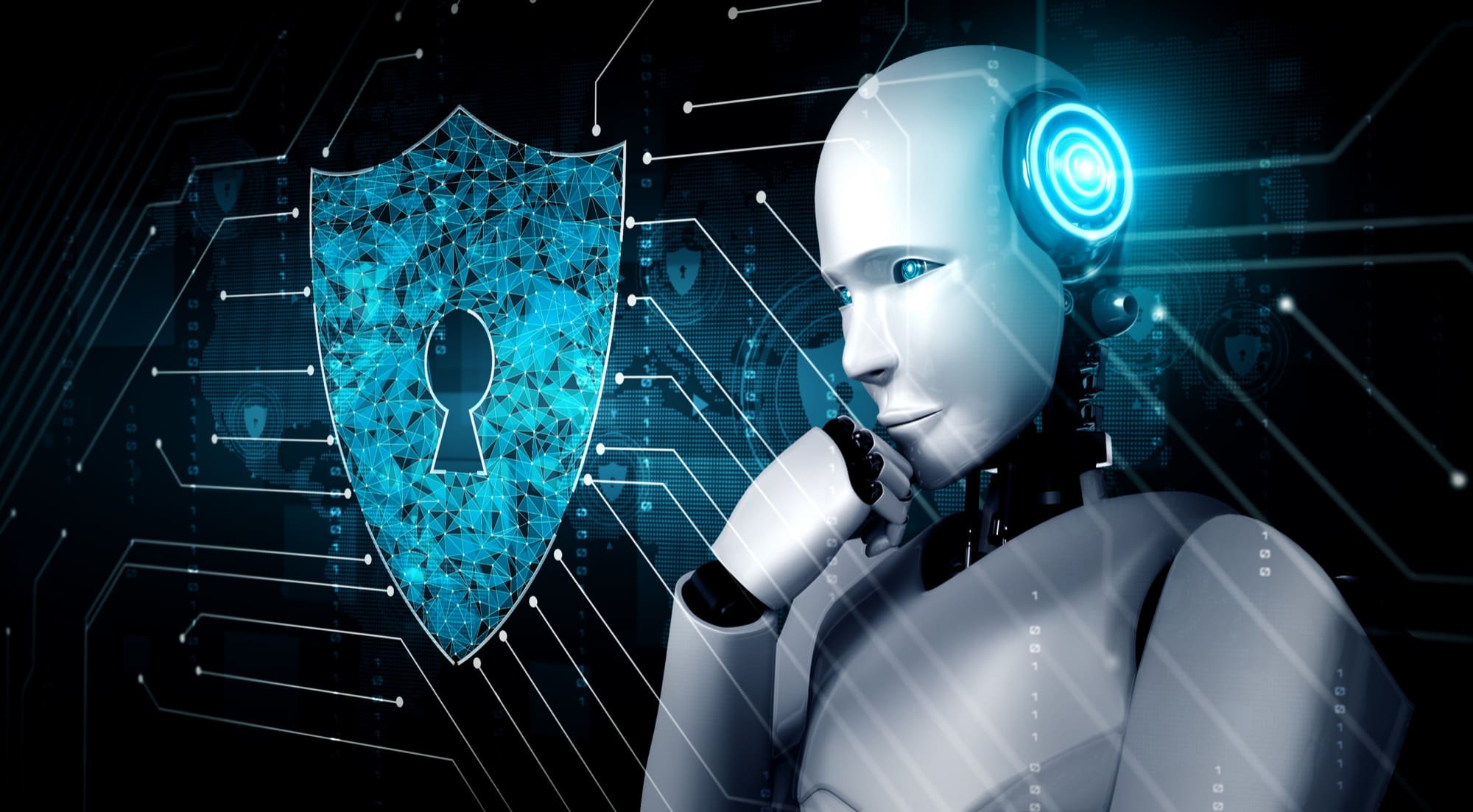In today’s rapidly evolving digital landscape, cybersecurity has become a paramount concern for organizations and individuals. With cyber threats growing in sophistication, integrating Artificial Intelligence (AI) in cybersecurity is not just an advancement; it’s a necessity. This article explores the role of AI in cybersecurity, exploring current trends, educational pathways, its intrinsic value, and future implications.
Is AI Used in Cybersecurity?

Integrating Artificial Intelligence (AI) in cybersecurity is not just prevalent; it’s becoming increasingly essential. AI’s role in cybersecurity is multifaceted, addressing various challenges that are beyond the scope of traditional security measures.
Advanced Threat Detection
One of the primary uses of AI in cybersecurity is advanced threat detection. With their machine learning capabilities, AI systems can more effectively analyze patterns and anomalies in network traffic than traditional methods. They learn from historical data, enabling them to more accurately identify potential threats, such as malware or phishing attempts. This proactive approach to threat detection allows for quicker responses to potential security breaches.
Automated Response Systems
AI also plays a crucial role in automating response systems. In the event of a detected threat, AI algorithms can initiate appropriate response protocols, such as isolating affected systems or blocking suspicious IP addresses. This automation is particularly vital in dealing with large-scale or fast-spreading threats, where time is of the essence.
Behavior Analysis and Anomaly Detection
Behavior analysis is another area where AI contributes significantly. By monitoring user behavior, AI can detect deviations that might indicate a security threat, such as unauthorized access attempts or unusual data transfers. This kind of anomaly detection is essential in identifying insider threats or compromised user credentials, which are challenging to detect through conventional means.
Enhancing Security Infrastructure
Beyond threat detection and response, AI also enhances overall security infrastructure. It assists in the regular assessment and optimization of security protocols, ensuring that the cybersecurity measures in place are robust and up-to-date. AI-driven simulations and modeling can anticipate potential vulnerabilities and suggest improvements, thereby strengthening an organization’s security posture.
Continuous Learning and Adaptation
The dynamic nature of cyber threats requires a security approach that can adapt and evolve. AI systems continuously learn from new data, improving their ability to detect and respond to novel or sophisticated threats. This aspect of continuous learning is crucial in keeping pace with the ever-changing landscape of cybersecurity threats.
Collaboration and Intelligence Sharing
AI facilitates enhanced collaboration and intelligence sharing among cybersecurity systems and professionals. By analyzing data from various sources, AI can provide insights that might be missed when operating in silos. This collaborative approach, powered by AI, is instrumental in developing a more comprehensive understanding of cybersecurity threats and trends.
The AI Trend in Cybersecurity

The trend of incorporating Artificial Intelligence in cybersecurity is rapidly gaining momentum, driven by the increasing sophistication of cyber threats and the need for more efficient security measures. This section highlights key trends and advancements in the use of AI in cybersecurity.
Predictive Analytics and Threat Intelligence
Predictive analytics is a significant trend in AI’s application to cybersecurity. AI systems can analyze vast amounts of data from past cyber incidents and current threat landscapes to predict future threats. This predictive intelligence is crucial for preemptive measures, allowing organizations to bolster their defenses against potential vulnerabilities before they are exploited.
Machine Learning-Driven Security Protocols
Machine learning, a subset of AI, is particularly influential in evolving cybersecurity protocols. These systems are trained on datasets of cyber threats and normal network behavior, enabling them to identify anomalies that could indicate a breach. The continuous learning aspect of these systems ensures they become more adept at recognizing new and sophisticated attack vectors over time.
Automated Threat Detection and Response
Automating threat detection and response is another trending application of AI in cybersecurity. AI-driven systems can identify threats in real time and initiate automated responses, such as isolating affected networks or systems, deploying patches, or alerting security personnel. This automation is key to managing modern cyber threats’ vast scale and complexity.
Enhanced Endpoint Security
AI is also transforming endpoint security. Ensuring endpoint security is more challenging with the proliferation of devices connected to corporate networks, including IoT devices. AI algorithms can monitor these endpoints for suspicious activities, providing an added layer of security in a landscape where perimeter defense is no longer sufficient.
Customized Security Solutions
AI enables more personalized and adaptive cybersecurity solutions. By analyzing specific patterns and vulnerabilities relevant to an organization, AI can tailor security measures to fit unique requirements. This bespoke approach is increasingly important as organizations vary significantly in their IT infrastructure and risk profiles.
Integration with Other Technologies
AI is not operating in isolation. Its integration with other emerging technologies, such as blockchain and cloud computing, is a growing trend. These integrations offer enhanced security features, like decentralized data management and secure cloud-based storage solutions, adding further robustness to cybersecurity frameworks.
Challenges and Ethical Considerations
As AI becomes more embedded in cybersecurity, it also brings challenges and ethical considerations. Issues like data privacy, AI bias, and the potential for AI-driven attacks are becoming noteworthy concerns.
Addressing these will be crucial to ensure that AI’s role in cybersecurity is responsible and sustainable.
Learning AI for Cybersecurity

Understanding the intersection of these two fields is crucial for professionals and students aspiring to specialize in AI for cybersecurity. This expanded focus offers guidance on the essential learning and skill development areas.
Foundational Knowledge in Machine Learning and Data Science
The core of AI in cybersecurity lies in machine learning and data science. A strong foundation in these areas is essential. This includes understanding algorithms, neural networks, and statistical methods. Learning how to manipulate and analyze large datasets is also crucial, as cybersecurity AI systems rely heavily on data to identify patterns and anomalies.
Programming Skills and Tools
Proficiency in programming languages such as Python, R, and Java is highly beneficial. Python, in particular, is widely used in both AI and cybersecurity due to its versatility and the extensive libraries available for data analysis and machine learning. Familiarity with cybersecurity tools and platforms incorporating AI, such as AI-enabled security information and event management (SIEM) systems, is also advantageous.
Network Security and Cryptography
An in-depth understanding of network security principles and practices is vital, as is knowledge of network protocols, secure network architecture, and intrusion detection systems. Additionally, it is beneficial to grasp cryptography and its application in securing data and communications within AI models.
Specialized Courses and Certifications
Numerous specialized courses and certifications are available for those looking to specialize in AI for cybersecurity. These programs often cover ethical hacking, AI algorithm development, threat modeling, and applying AI in cybersecurity solutions. Certifications from recognized organizations can add significant value to one’s professional credentials.
Ethical Hacking and Penetration Testing
Learning ethical hacking and penetration testing is invaluable. These skills allow professionals to think like attackers, a crucial aspect when designing AI systems for cybersecurity.
Understanding how to exploit vulnerabilities and conduct penetration tests helps develop more robust AI-driven security solutions.
Stay Updated with Latest Trends
The fields of AI and cybersecurity are constantly evolving. Staying updated on the latest trends, technologies, and threats is essential. Regularly attending webinars, workshops, and conferences and engaging with the cybersecurity community can provide insights into emerging challenges and innovative solutions.
Practical Experience and Projects
Hands-on experience is paramount. Engaging in practical projects, internships, or collaborating on open-source AI cybersecurity initiatives can provide real-world experience. Developing AI models for threat detection, anomaly detection, or predictive analytics in cybersecurity offers practical insights that are invaluable for professional development.
Will AI Replace Cybersecurity?

Whether AI will replace cybersecurity professionals is a topic of much debate and speculation. To understand this dynamic, it’s necessary to examine AI’s capabilities in the context of cybersecurity and the irreplaceable role of human expertise.
Complementary, Not Replacement
AI in cybersecurity is best viewed as a complementary tool rather than a replacement for human expertise. AI excels at processing vast amounts of data, identifying patterns, and swiftly executing predefined protocols. However, the nuanced decision-making, ethical considerations, and adaptive strategic planning required in cybersecurity rely heavily on human judgment.
Human Expertise and Contextual Understanding
Cybersecurity professionals bring contextual understanding and critical thinking to the table, skills currently beyond AI’s reach. They can interpret the nuances of different threats, understand the broader context of attacks, and make informed decisions based on experience and intuition. This human element is crucial in developing and overseeing AI systems, ensuring they are aligned with real-world cybersecurity needs.
AI as a Tool for Augmentation
AI acts as a powerful augmentation tool, enhancing the capabilities of cybersecurity professionals. It can automate routine tasks, provide comprehensive threat analysis, and allow professionals to focus on cybersecurity’s more complex and strategic aspects. This synergy between AI and human expertise leads to a more effective and efficient approach to tackling cyber threats.
Ethical and Strategic Decision-Making
Cybersecurity often involves making ethical and strategic decisions, especially when dealing with sensitive data and complex threat landscapes. In its current form, AI is not equipped to handle these aspects independently. The human touch is essential for balancing technical decisions, ethical implications, and strategic considerations.
Adapting to Evolving Threats
The cyber threat landscape continuously evolves, with new types of attacks emerging regularly. While AI can adapt to new threats to a certain extent, human cybersecurity experts must guide and recalibrate AI systems in response to these evolving threats. This adaptability and foresight are vital components of an effective cybersecurity strategy.
Collaboration Between AI and Cybersecurity Teams
The most effective model is a collaborative approach, where AI and cybersecurity teams work together. AI can handle large-scale data analysis and routine monitoring, while human teams can focus on strategic planning, response management, and guiding the AI in learning new patterns and threats.
How AI Will Change Cybersecurity?

Integrating Artificial Intelligence (AI) into cybersecurity is not just altering current practices; it’s shaping the future of how we approach and manage digital security. Here’s an in-depth look at how AI is poised to revolutionize the field of cybersecurity.
Real-Time Threat Detection and Response
One of AI’s most significant changes in cybersecurity is the capability for real-time threat detection and response. AI algorithms can analyze network traffic and user behavior continuously, identifying threats as they occur. This immediate detection allows for quicker responses, potentially stopping cyber attacks before they can cause significant damage.
Predictive Cybersecurity Measures
AI enhances the ability to predict and prepare for future threats. By analyzing trends and patterns in data, AI can forecast potential security vulnerabilities and attack vectors. This predictive capability enables organizations to proactively strengthen their defenses, reducing the likelihood of successful attacks.
Customized Security Solutions
AI allows for the development of more personalized security measures. AI can tailor security protocols to fit unique environments by learning an organization’s specific patterns and needs. This customization leads to more effective security, as measures are directly aligned with specific risk profiles and operational requirements.
Enhanced Incident Analysis and Forensics
AI drastically improves the efficiency and effectiveness of incident analysis and forensics. It can quickly sift through vast amounts of data to identify the source and nature of an attack. This rapid analysis is crucial for understanding how breaches occur and for implementing measures to prevent future incidents.
Automated Security Operations
Automation of routine cybersecurity tasks is another area where AI is making a significant impact. AI systems can efficiently handle tasks such as patch management, vulnerability scanning, and log analysis. This automation frees up cybersecurity professionals to focus on more strategic and complex issues.
Challenges in AI Implementation
While AI promises to transform cybersecurity, there are challenges in its implementation. Ensuring the accuracy of AI systems, avoiding bias in AI algorithms, and protecting AI-driven systems from being manipulated by attackers are some hurdles that need addressing. Continuous refinement and ethical considerations are essential to effectively leveraging AI in cybersecurity.
Evolution of Cybersecurity Roles
The role of cybersecurity professionals is evolving with the integration of AI. There is a growing need for skills in managing and interpreting AI systems. Cybersecurity experts must now possess a blend of technical AI knowledge and traditional cybersecurity expertise to navigate this new landscape effectively.
Final Thoughts: The Symbiotic Future of AI and Cybersecurity

As we conclude our exploration of AI and Cybersecurity, it’s clear that we are standing at the cusp of a new era in digital security. The symbiosis between AI and cybersecurity is not just an optional upgrade; it is becoming an essential element of modern cybersecurity strategies.
AI as a Force Multiplier in Cybersecurity
AI acts as a force multiplier in cybersecurity. Its ability to analyze vast datasets, identify patterns, and predict threats complements the expertise of cybersecurity professionals. This partnership enhances our ability to defend against increasingly sophisticated cyber threats, making AI an indispensable ally in the fight against cybercrime.
Continual Evolution and Adaptation
The integration of AI into cybersecurity is a journey, not a destination. As cyber threats evolve, so must the AI systems designed to combat them. This requires a commitment to continual learning, adaptation, and innovation. To remain effective, AI systems and cybersecurity professionals must stay up-to-date on cyber criminals’ latest developments and tactics.
Ethical and Responsible AI Implementation
It’s crucial to embrace AI in cybersecurity responsibly and ethically. This means ensuring that AI systems are transparent and unbiased and safeguarding user privacy. We must be vigilant about the ethical implications of AI and work towards developing AI that respects and protects our society’s values.
Preparing for the Future
It is imperative for organizations and individuals alike to prepare for a future where AI plays a central role in cybersecurity. This involves investing in the right technologies, developing skills in both AI and cybersecurity and fostering a culture of security awareness and innovation.
A Collaborative Approach to Cybersecurity
Finally, the role of AI in cybersecurity underscores the importance of collaboration. Sharing knowledge, best practices, and threat intelligence within the cybersecurity community is vital. We can leverage AI to its fullest potential by working together, creating a more secure and resilient digital world.
Conclusion: AI and Cybersecurity
The intersection of AI and Cybersecurity is a fascinating and rapidly evolving field. As AI continues to advance, its role in cybersecurity will only grow more significant, offering new solutions and posing new challenges. Embracing this evolution with a balanced approach to technological advancement and ethical consideration is the key to navigating the future of digital security.
FAQ: AI and Cybersecurity
While AI significantly enhances the ability to detect and respond to cyber threats, it cannot prevent all types of cyber attacks on its own. It’s a tool that augments traditional cybersecurity measures, making them more effective but not infallible. Continuous updates and human oversight are crucial for maintaining robust defense systems.
AI improves threat detection by analyzing vast amounts of data to identify patterns and anomalies indicative of cyber threats. It uses machine learning algorithms to learn from previous attacks. It can detect subtle, unusual activities that might be missed by traditional security measures, thus offering quicker and more accurate threat detection.
Yes, there are risks. These include the potential for AI systems to be manipulated or bypassed by sophisticated cyber attackers, the possibility of false positives in threat detection, and ethical concerns related to privacy and data usage. Proper management and regular updates can mitigate these risks.
Professionals in AI-driven cybersecurity need a combination of skills in cybersecurity principles, machine learning, data analysis, and programming (particularly in languages like Python). Familiarity with network architecture and ethical hacking can also be advantageous.
AI is not likely to replace human roles in cybersecurity entirely. It serves as a tool to augment human capabilities, handle large-scale data analysis, and automate routine tasks. Human expertise is still essential for strategic decision-making, contextual analysis, and managing complex security scenarios that AI cannot fully comprehend.
AI systems in cybersecurity are designed to learn and adapt continuously. By using machine learning algorithms, they can update their threat detection capabilities based on new data, allowing them to respond to emerging cyber threats more effectively over time.
Absolutely. As cyber threats become more sophisticated and prevalent, the role of AI in cybersecurity will grow increasingly vital. AI’s ability to process large datasets, adapt to new threats, and automate responses makes it an indispensable tool in future cybersecurity strategies.

